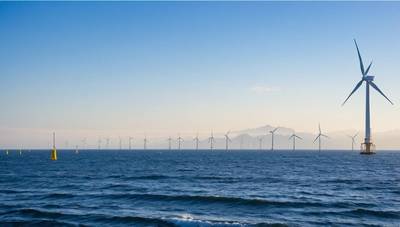Japan is poised to amend offshore wind regulations as players get coldfeet
Insiders in the industry say that Japan will likely sweeten its terms to developers who want to build an offshore wind farm. The country is looking to re-establish its energy ambitions against a global slump of projects that have been hit by rising costs and delays.
By 2040, the government wants to reach 45 gigawatts in offshore wind power, which will reduce its dependence on coal and gas imports for electricity generation, as well as its carbon emissions, and strengthen national security.
Its plans have stagnated after three rounds of major auctions for capacity development. The trading house Mitsubishi, which won the first government auction for 2021, warned in February that rising costs forced it to re-evaluate its plans. The company has not yet started construction on any of its projects.
Mitsubishi's warning and the booking of over $300 million offshore wind losses followed a decision made by Denmark's Orsted last year to withdraw from Japan as part of a global restructuring.
Shell has also recently reduced its team focused upon Japan offshore wind according to three industry sources, as it scales down low-carbon operations.
Shell refused to comment on the offshore wind operation, but stated that it "continuously evaluates" opportunities to optimize its global portfolio.
The government wants to combat the problems that are plaguing the renewables industry globally, as operators cancel or reduce projects in Europe, America and Asia. To do this, it is holding discussions with the industry, which has a list of demands to help reduce costs and risks.
This is a new industry in Japan, and it's an intense learning process for all parties. The government's willingness to collaborate with the industry is key, said Yuriy Huber, CEO of K.K. Yuri Group is a Tokyo-based consulting and research firm.
According to documents from the government and to sources who have direct knowledge, among other potential changes, the authorities are looking at extending project durations up to 40 years, instead of 30 years, and clarifying cabotage law to allow ships not flying the Japanese flag to operate offshore wind farm zones.
The industry is also pushing for the capacity auctions, which would allow industrial and utility buyers to lock-in power contracts over a longer period of time instead of an annual contract.
The offshore wind industry also wants the government provide tax breaks or subsidies to large industrial users in exchange for long-term contracts to purchase wind power, according to the sources. This may seem unlikely given the high level of government support already provided to households to deal with rising prices.
Six industry sources were involved in the talks between the players of offshore wind and Japan's Industry Ministry, or METI, as well as the Land Ministry. The sources spoke under condition of anonymity because the discussions are confidential.
Keidanren (Japan's largest business lobby), whose members include some of the country's most powerful users, did not comment immediately on this tax subsidy.
Sources and documents from the government said that the government was also considering changing the tariff system to "feed-in premium" (FIP), from "feed-in tariff" (FIT), to allow Mitsubishi to profit from market prices. This rule has already been implemented for the second and subsequent auctions.
A METI official responsible for the offshore wind sector said that the proposed switch from FIT to FIP, which is yet to be approved by the FIT committee, is a clarification and not a change of rules. The official declined to comment on any potential rule changes.
UNEVEN START
Japan has only auctioned a small fraction of its offshore wind capacity. Tokyo, despite being late in embracing offshore wind, attracted many foreign investors drawn by the ambition to increase Japan's energy independence.
Mitsubishi won the first round of the competition, which was a domestic consortium, and the subsequent rounds were won by foreign and local operators, including Germany's RWE and Spain's Iberdrola.
Industry sources claim that Mitsubishi faces a delay of at least two years in the launch of its farm equipment, compared to its original plan, which was for them start operating between 2030 and 2028.
The company said it is closely monitoring discussions with METI on possible rule changes and is reviewing its business plans "taking into consideration the direction of such discussion/revision."
METI said in February that Japan could need to increase its liquefied gas imports to 74 million tons by 2040. This would reverse the downward trend, as data centers and semiconductors drive the power demand.
Even though they did not win any offshore wind sites in the first round, foreign operators such as Equinor or Total maintained their presence in Japan. Both companies have not responded to requests for comments.
Humber said that those who want to enter the market later, when things are simpler, may have to pay a premium.
(source: Reuters)




